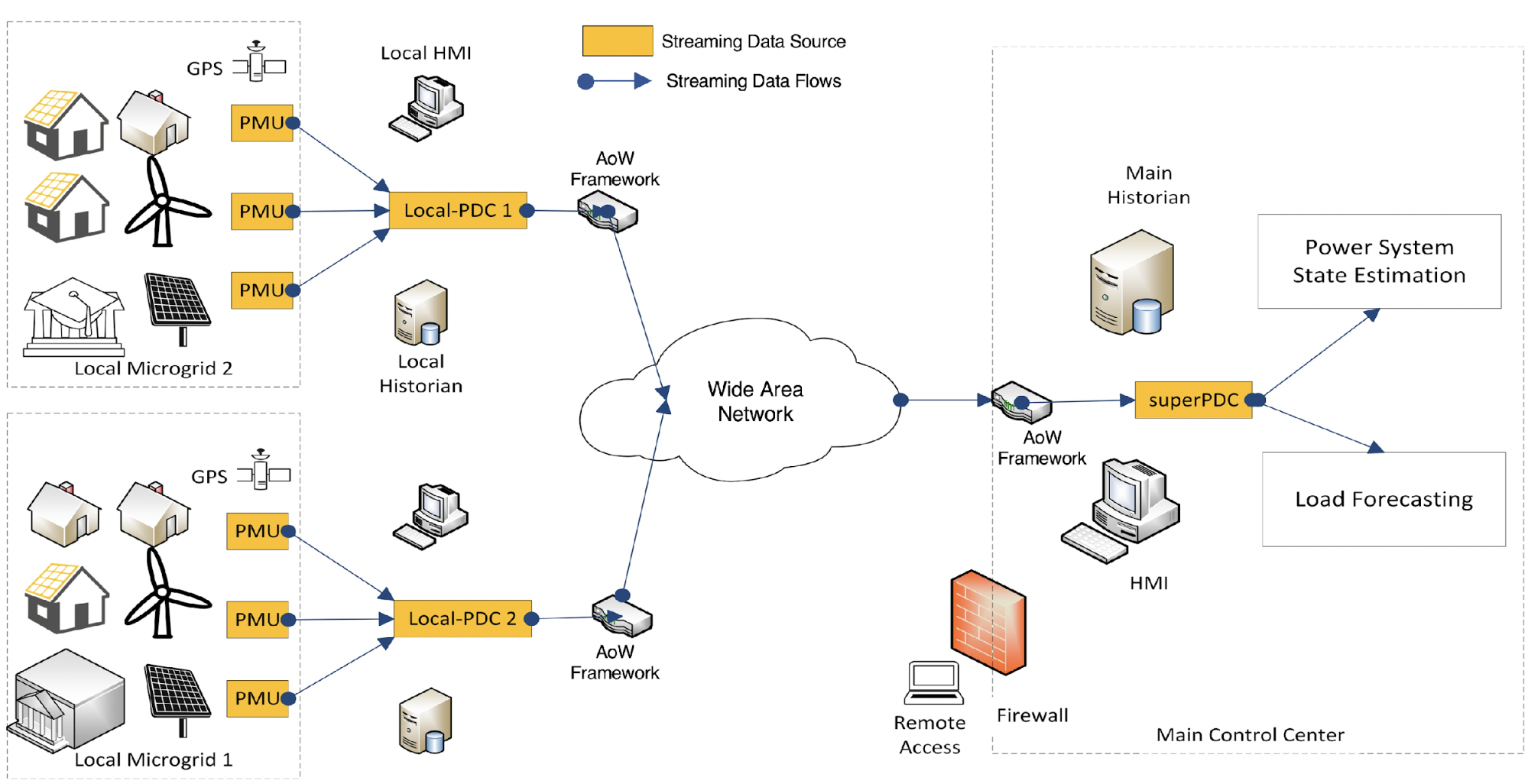Quantum Secure Power Grids
In a joint effort with the Instrumentation Division of the Brookhaven National Laboratory, we aim to deliver a prototype of a fielded ultimately secure system that combines real or near-real time computations on streaming data in transit within the network together with quantum-protected key exchange, all in the context of energy delivery. Our main objective is to provide hack-proof encryption to data flowing between different sources and destinations in the network, while at the same time allowing intermediate smart network nodes to have access to the encrypted data and perform a desired set of computations, e.g., false data injection detection.

(left) AoW nodes, strategically located in a network, can be used for general-purpose processing of local data in real/near-real time and further coordinate to provide wider-scope perspectives. (right) For the Smart Grid use case, AoW nodes can be collocated with PDCs within the PMU-PDC communication architecture to analyze and provide early perspective on streaming PMU data.
The project is a synergy of three state-of-the-art ideas, combining data protection using quantum-secure keys with real-time anomaly detection in streaming data into a quantum/classical hybrid system for ultimate secure transmission and analysis of power grid data. Tthe Analysis on the Wire (AoW) framework has the objective to perform general-purpose, distributed, in-network computations on streaming data in transit. forming an in-network distributed computer. In the case of the Smart Grid, we have been researching techniques for performing real-time/near real-time data analysis on streaming measurement data. There is a wide range of applications in this context, not only in management/operations, such as load forecasting and power system State Estimation (SE), but also, very importantly, in cybersecurity, such as detection of anomalous patterns in the data, indicating the possibility of malicious attacks on the power infrastructure. Detecting such patterns is critical, especially when attacks are focused on the data sources, e.g., tampering with Phasor Measurement Units (PMUs),. Additionally, we have built a prototype to perform memory-assisted measurement-device-independent quantum key distribution (MDI-QKD), which is a maximum-security scheme for key generation that enables real-time eavesdropping detection without the detection vulnerability of standard QKD. Finally, we will leverage post-quantum cryptography, also known as quantum-proof cryptography, which is the most powerful classical strategy for data encryption, robust even to attacks by quantum computers.
We are developing a deployed prototype that will use memory-assisted MDI-QKD to generate quantum-secure encryption keys and post-quantum encryption channels for sharing these keys with AoW nodes so that they can access encrypted data. This will establish a highly secure framework that can protect the data flows between sources and destinations in the communication network(s) servicing a Smart Grid.

(a). Qubit Generation, A(b). Stabilization and Compensation, A(c). Orchestration, A(d). Measurement and Characterization. A (Not shown): Network connections between green and yellow tagged devices. B. two-photon interference of |H⟩ over 158 km. C. 40 Length key randomly generated, transmitted and measured over 18 km.
